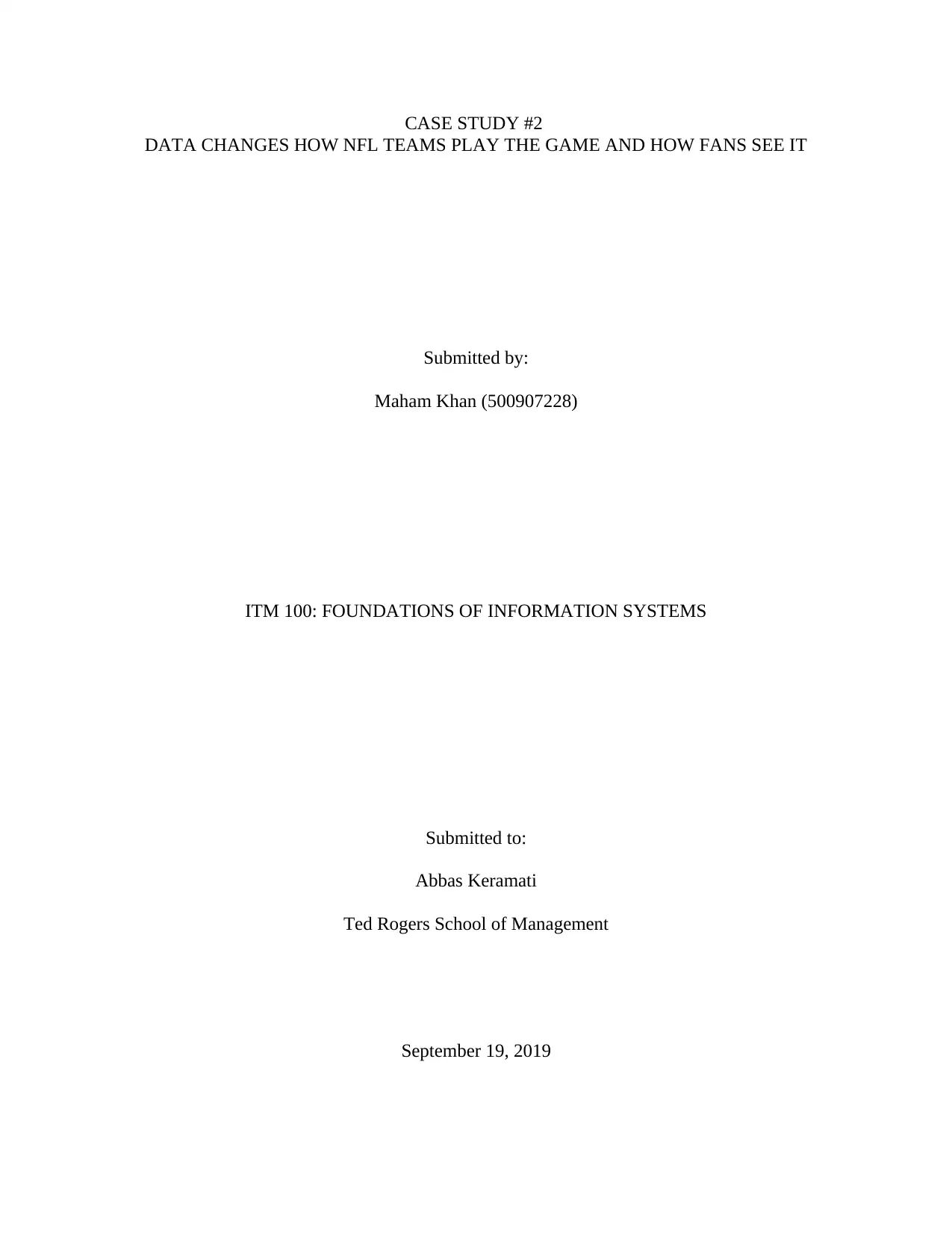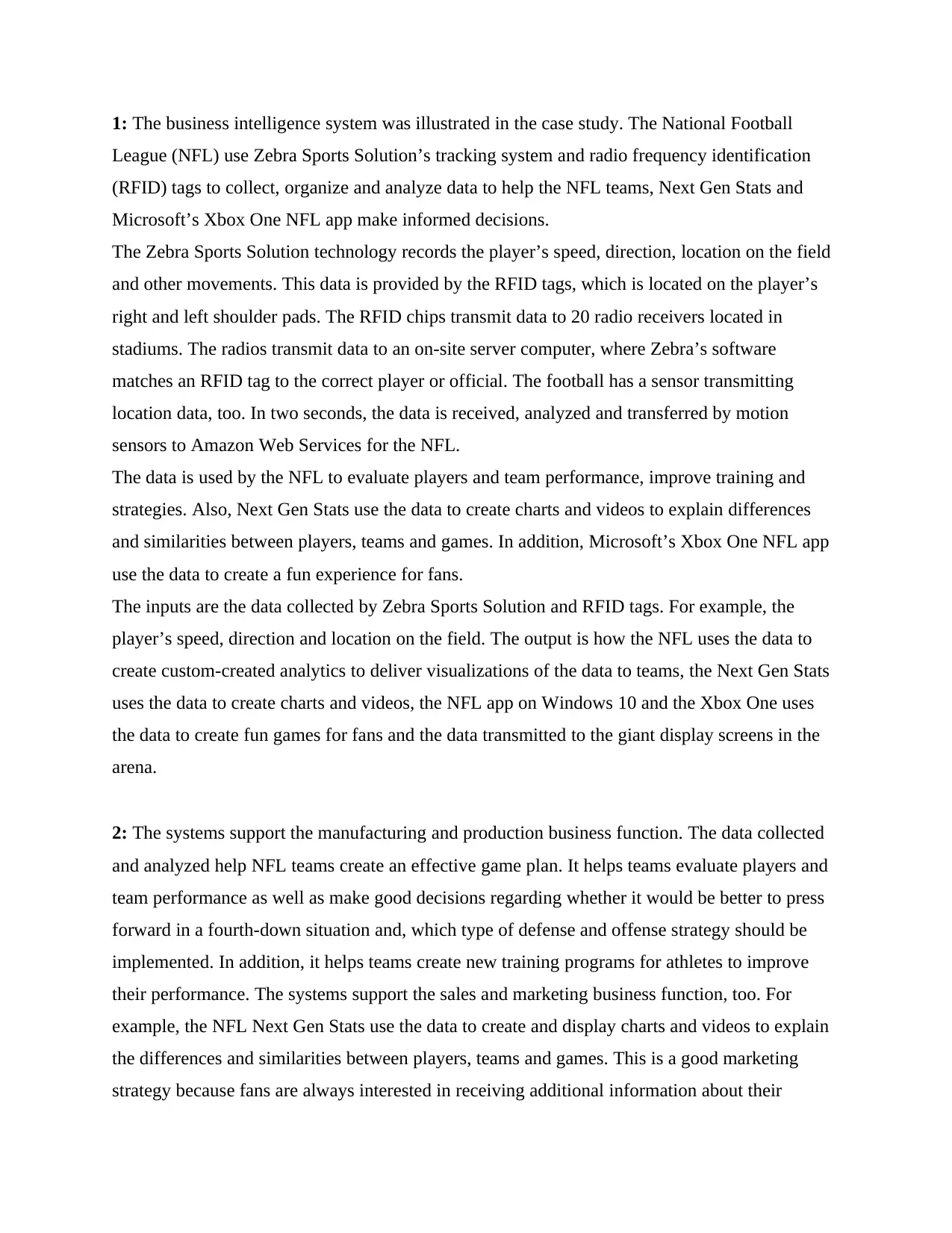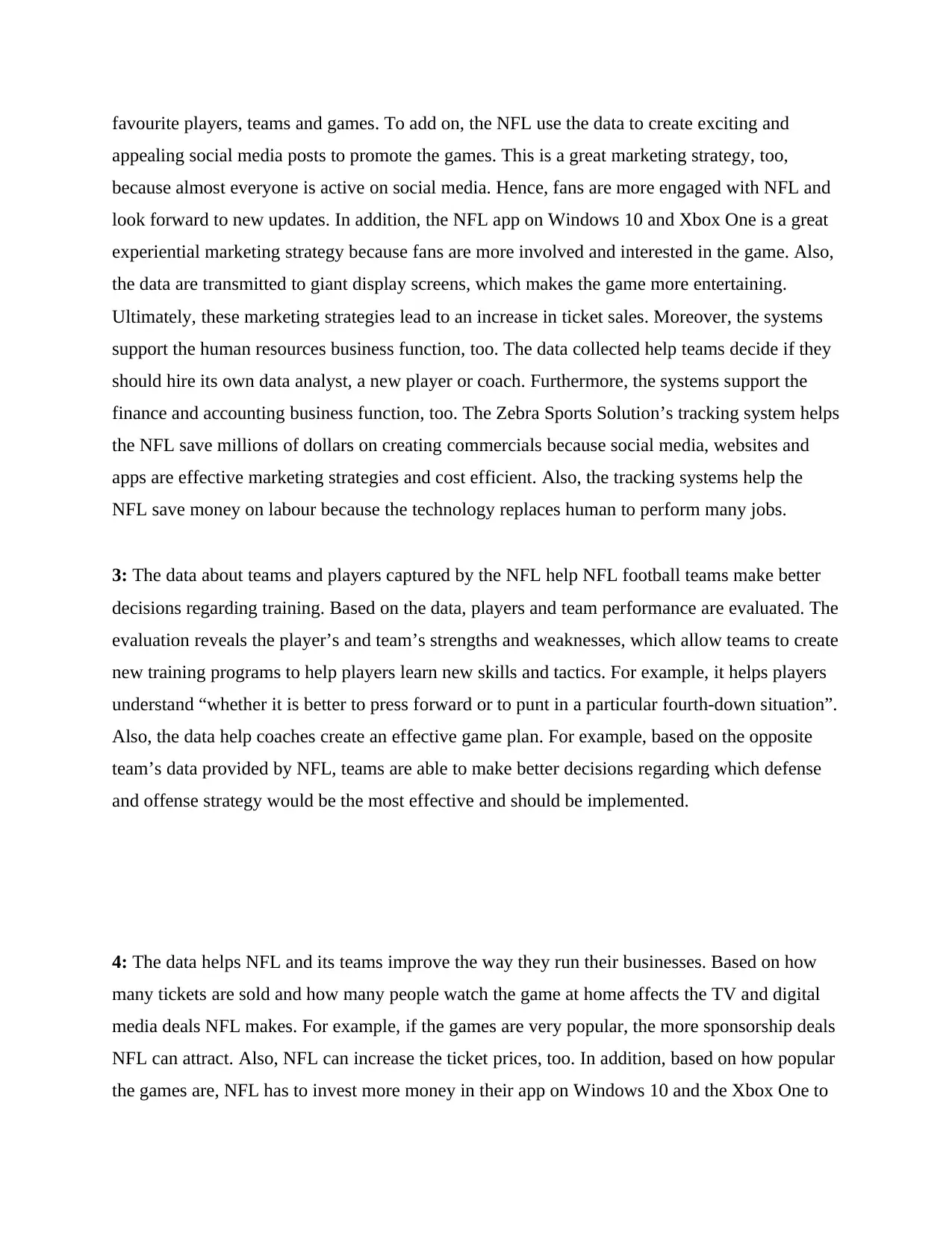ITM 100: Data Analysis of NFL Gameplay and Fan Experience
VerifiedAdded on 2021/07/29
|4
|1027
|123
Case Study
AI Summary
This case study explores how the National Football League (NFL) utilizes data analytics to enhance various aspects of the game. The analysis focuses on the use of Zebra Sports Solution's tracking system and radio frequency identification (RFID) tags to collect player data, including speed, direction, and location. This data is then processed and analyzed to improve team performance, training programs, and game strategies. The study also examines how the NFL leverages this data to create engaging experiences for fans through Next Gen Stats, the Microsoft Xbox One NFL app, and giant display screens in stadiums. The business functions supported by these systems include manufacturing and production, sales and marketing, human resources, and finance and accounting, highlighting the comprehensive impact of data-driven decision-making within the NFL. The data helps teams evaluate player performance, create effective game plans, and make informed decisions on various aspects of the business, ultimately improving the way the NFL operates and engages with its fans, leading to increased revenue and enhanced fan experiences.
1 out of 4






![[object Object]](/_next/static/media/star-bottom.7253800d.svg)